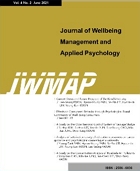- 권한신청
- E-ISSN2586-6036
- KCI
Change of MS Method and Comparison of SIFT-MS Method
KWON, Lee-Seung (Department of Health Care Management, Catholic Kwandong University)
LEE, Ji-Hoon (Syft Technologies Ltd.)
KIM, Romertta (Syft Technologies Ltd.)
KWON, Woo-Taeg (Department of Environmental Health & Safety, Eulji University)
Abstract
Purpose: This study examines the history of the evolution of MS analysis and intends to consider the future direction of technological development through the difference from the latest technology, SIFT-MS. Research design, data and methodology: A method of analysis will be described in detail at the below by SIFT-MS (Selected Ion Flow Mass Spectrometry), which is a technology developed by a company called SIFT Technologies. Results: The initial concept of mass spectrometry was begun in the late 1890s, and it continues to evolve even after the 21st century through the ripening stage of the 20th century. The development process of mass spectrometry by year has been described in detail in the Main text. Conclusions: Mass spectrometry, qualitative and quantitative analysis of substances plays a very important role in the research and medical fields. The development of these analytical methods is expected to continue in the future, and faster and more accurate qualitative analysis and mass spectrometry will be developed than the level currently reached. In addition, it is expected that hardware and software will be configured so that non-analysis experts can handle it easily, and it will be used as a technology that is more closely related to our lives.
- keywords
- Mass Spectrometry, GC-MS, History, Qualitative analysis, Quantitative analysis
- 다운로드 수
- 조회수
- 0KCI 피인용수
- 0WOS 피인용수














